The Hazard Perception Test
Keeping a safe following-distance

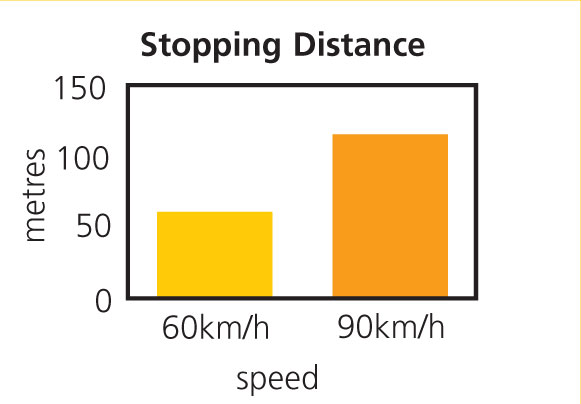
The distance that it will take you to stop your car depends on the speed at which you are travelling. The faster you go, the longer the stopping distance. For example, you need twice the distance to stop from 90km/hour compared with stopping from 60 km/hour, even in the best possible driving conditions - that is, on a sealed, dry road.
This means that you must increase the following-distance between you and the vehicle ahead as you increase speed. If you don't do this you may crash into the back of the vehicle ahead if it has to stop quickly. This type of crash happens to a lot of drivers each year, but there's an easy way to avoid this. It's called the "3 second rule".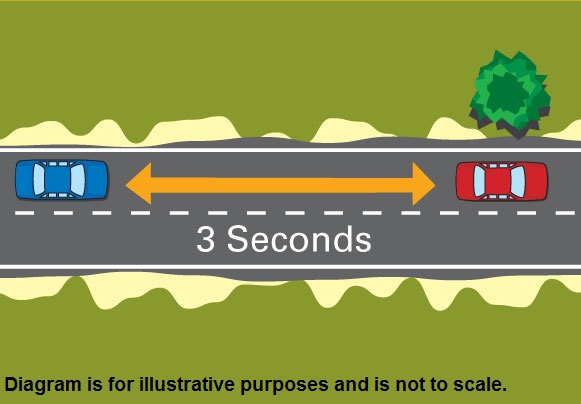
The "3 second rule"
This simple rule applies at any speed and is easy to use. Here's how. All you need to do when driving is watch the vehicle in front of you pass an object at the side of the road such as a power pole, tree or sign. As it passes the object, start counting "one thousand and one, one thousand and two".
If you pass the object you picked out before you finish saying all the words, you are following too closely. Slow down, pick another roadside object and repeat the words again to make sure that you have increased your following distance enough.
What's good about the "3 second rule" is that it helps you keep a safe following-distance at any speed. Using the "3 second rule" gives you a bigger following-distance the faster you drive.
Generally speaking, you should allow more than a 3 second following-distance in rain, fog and on icy roads. You should also use a longer following-distance at night because it's harder to judge distances and spot hazards when driving in the dark.
What a safe following-distance looks like
What do safe and unsafe following-distances look like to a driver? Below is a "driver's eye view" of following another vehicle at 60 km/h.
- At a 1 second following-distance (Too close - unsafe!).
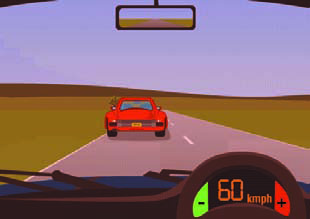
- At a 3 second following-distance (OK in good conditions only!)
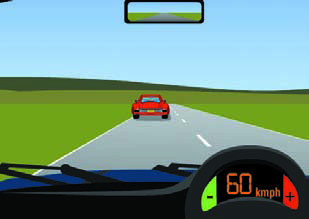
- At a 4 second following-distance
This gap should be increased if it is wet, visibility is poor, you are driving downhill, you are being tailgated or if you are tired, unwell or distracted.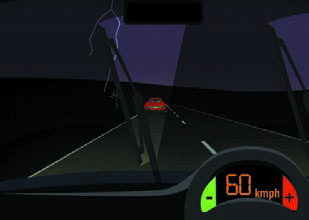
Key points summary: Keeping a safe following-distance
- The faster you drive, the longer the distance you need to stop.
- Use the "3 second" rule to keep a safe distance - you need more when it is dark, wet, foggy or icy.
TipYou may find it is difficult to keep a 3 second following-distance in heavy traffic - other drivers may move into the gap that you leave. This can be annoying, but try to maintain a 3 second following-distance anyway or as big a gap as you can. This will help you stay out of trouble when hazards arise.
Practice exercises: Using the rule
When you are driving, practise using the rule when following behind other vehicles. You might be surprised how close to other cars you have been driving. Practise in different speed zones until the rule becomes easy to use.
29-31































